The aroma of garlic sizzling in butter never fails to transport me straight to my happy place. Today, I’m excited to share my go-to recipe for Old Bay Garlic Shrimp Pasta—a dish that turns a simple night at home into a gourmet experience in under 30 minutes. Trust me, with its blend of rich flavors and a touch of zesty brightness, this pasta is not just quick to prepare but also a crowd-pleaser, perfect for impressing guests or treating yourself after a long day. Plus, it’s an easy way to elevate your weeknight dinner into something special. So, are you ready to dive into a bowl of creamy goodness that’s as delightful to make as it is to eat? Let’s get cooking!
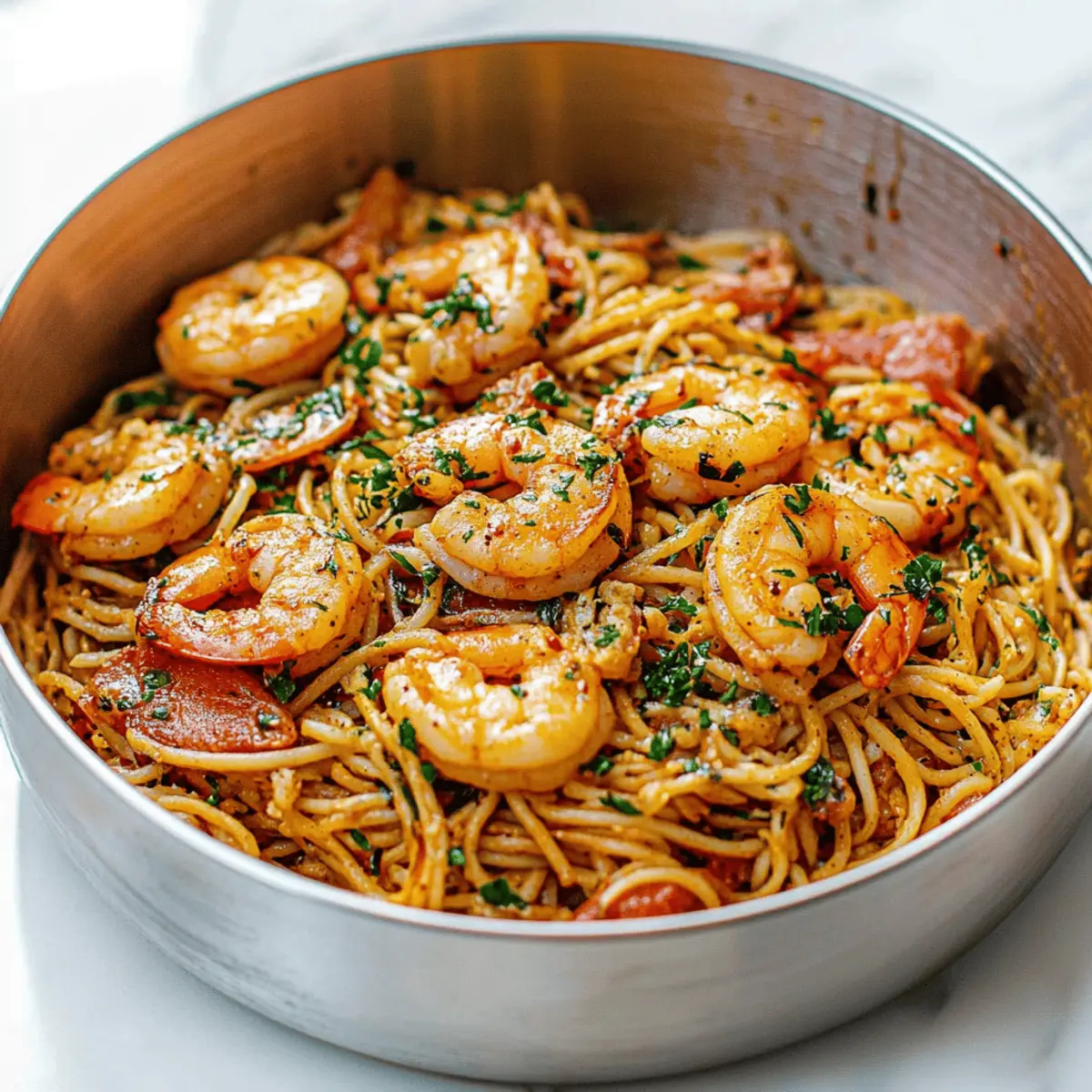
Why is This Pasta So Special?
Simplicity: With just a handful of ingredients, you can enjoy a gourmet meal without breaking a sweat.
Bold Flavor: The Old Bay seasoning infuses the dish with a unique, savory taste that’s both inviting and memorable.
Time-Saving: Ready in just 25 minutes, it's perfect for those busy weeknights when you crave something delicious but quick.
Crowd-Pleaser: This dish is a hit whether you're hosting friends or enjoying a cozy night in. Pair it with a side salad or some garlic bread for a complete meal!
Versatile: Feel free to customize it by adding your favorite veggies or swapping proteins, making it your own delicious creation.
Don’t miss out on this older recipe, it's the perfect comfort food—you can check out more quick and flavorful dishes in our Weeknight Wonders section!
Old Bay Garlic Shrimp Pasta Ingredients
• Dive into the delightful flavors of this dish with these essential ingredients!
For the Shrimp
• 1 pound shrimp – deveined, peeled, tail-on; pat dry for best texture.
• 1 tablespoon + 2 teaspoons Old Bay seasoning – adds a signature savory kick to the shrimp.
• 1½ tablespoons fresh lemon juice – brightens the flavors and balances richness.
For the Pasta
• 12 oz dried spaghetti – the perfect base for absorbing all that creamy goodness.
• Salt and black pepper – season to taste for a flavor boost.
For the Sauce
• 3 tablespoons unsalted butter – brings richness and helps with sautéing the ingredients.
• 1 tablespoon olive oil – adds extra flavor and helps prevent sticking.
• 1½ tablespoons finely minced garlic – creates an aromatic foundation for the sauce.
• ¼ cup finely minced shallots – offers a subtle sweetness and depth to the dish.
• ¼ cup dry white wine – scrape up the pan bits for an intense flavor punch.
• ½ cup heavy cream – achieves that creamy texture that makes this dish luxurious.
• ½ cup freshly shredded parmesan cheese – enhance the creaminess and add a nutty flavor.
• ¼ cup chopped parsley – brightens up the plate and adds freshness; reserve some for garnish.
This Old Bay Garlic Shrimp Pasta is as easy to prepare as it is delicious to eat—your kitchen will thank you!
Step‑by‑Step Instructions for Old Bay Garlic Shrimp Pasta
Step 1: Boil the Pasta
Start by bringing a large pot of salted water to a rolling boil over high heat. Once boiling, add the dried spaghetti, cooking according to package instructions until al dente, about 8-10 minutes. Stir occasionally to prevent sticking. Before draining, remember to reserve at least ½ cup of the pasta water, then drain the pasta and set it aside in a large bowl.
Step 2: Season the Shrimp
In a medium bowl, combine the peeled and deveined shrimp with 2 teaspoons of Old Bay seasoning and 1½ tablespoons of fresh lemon juice. Gently toss to coat the shrimp evenly, allowing them to marinate for about 5 minutes. This will infuse the shrimp with flavor, ensuring that your Old Bay Garlic Shrimp Pasta is bursting with taste.
Step 3: Sauté the Garlic and Shrimp
In a large skillet, heat 1 tablespoon of unsalted butter and 1 tablespoon of olive oil over medium heat until melted and shimmering. Add ½ tablespoon of minced garlic to the skillet, sautéing for about 30 seconds until fragrant. Quickly add the marinated shrimp and cook for about 2-3 minutes, or until they turn pink and opaque. Remove the shrimp, placing them on a plate and leaving the skillet ready for the next steps.
Step 4: Cook the Shallots and Garlic
Return the skillet to medium heat and add 2 tablespoons of unsalted butter. Once melted, toss in the minced shallots, sautéing for about 2-3 minutes until they become translucent. Next, add the remaining 1½ tablespoons of minced garlic and cook for another 30 seconds, stirring continually to avoid burning. The aroma will elevate your kitchen as you prepare for the creamy sauce.
Step 5: Deglaze with White Wine
Pour in the ¼ cup of dry white wine, using a wooden spoon to scrape up any flavorful browned bits at the bottom of the skillet. Let it simmer for about 2-3 minutes, allowing the wine to reduce until only 1 tablespoon remains. This step is crucial for deepening the flavor profile of your Old Bay Garlic Shrimp Pasta.
Step 6: Create the Creamy Sauce
Next, add ½ cup of heavy cream, ½ cup of freshly shredded parmesan cheese, and 1 tablespoon of Old Bay seasoning into the skillet. Stir constantly over low heat until the cheese melts and the sauce becomes creamy, about 2-3 minutes. The rich, velvety mixture will blend seamlessly with the other ingredients, setting the stage for your shrimp.
Step 7: Combine the Shrimp and Pasta
Return the cooked shrimp to the skillet, stirring in ¼ cup of chopped parsley for a burst of freshness. Gently toss everything together to ensure the shrimp are coated in the creamy sauce. Gradually add the reserved pasta water, adjusting the consistency of the sauce as needed, while ensuring a clinging texture for the pasta.
Step 8: Serve and Garnish
With the heat turned off, add the drained spaghetti to the skillet, tossing thoroughly to combine. Taste the Old Bay Garlic Shrimp Pasta and adjust seasoning with additional salt, black pepper, or Old Bay if desired. Serve the pasta hot, garnished with extra parmesan cheese and parsley for a pop of color and flavor, ready to delight your family or guests.

Make Ahead Options
Old Bay Garlic Shrimp Pasta is a fantastic choice for meal prep, allowing you to savor a delicious homemade dinner even on your busiest nights! You can season the shrimp and marinate them with Old Bay and lemon juice up to 24 hours in advance. The creamy sauce, too, can be prepared ahead of time; simply store it in an airtight container in the refrigerator for up to 3 days. To maintain quality, wait to combine the sauce with the shrimp and pasta until you're ready to serve. When you’re set to enjoy your meal, just reheat the sauce over low heat, toss in the sautéed shrimp and cooked pasta, and you'll have a delightful dish ready in minutes!
How to Store and Freeze Old Bay Garlic Shrimp Pasta
Fridge: Store leftover Old Bay Garlic Shrimp Pasta in an airtight container for up to 3 days. Reheat gently on the stovetop; add a splash of cream or reserved pasta water to rejuvenate the sauce.
Freezer: For longer storage, freeze the pasta in a freezer-safe container for up to 2 months. Thaw overnight in the fridge before reheating to maintain texture and flavor.
Reheating: When ready to enjoy, reheat on low in a skillet, adding a bit of cream or pasta water to loosen the sauce and prevent drying out.
Storage Tip: Avoid freezing with added shrimp for the best texture; instead, add freshly cooked shrimp when reheating.
What to Serve with Old Bay Garlic Shrimp Pasta
Elevate your dining experience with delightful sides that create a well-rounded meal.
- Garlic Bread: The warm, buttery bread is perfect for soaking up the creamy sauce, adding a comforting crunch to your meal.
- Caesar Salad: Crisp romaine lettuce and tangy dressing provide a fresh contrast to the richness of the pasta, enhancing each bite.
- Steamed Asparagus: Tender asparagus adds a pop of color and a crisp texture, making for a deliciously green side.
- Roasted Brussels Sprouts: The slightly caramelized outer leaves and tender centers bring earthy flavors that pair wonderfully with shrimp.
- Lemon-Infused Rice: This light and fragrant side marries well with the zesty notes from the shrimp, balancing flavors beautifully.
- Chardonnay: A glass of crisp, chilled chardonnay complements the buttery flavors of the pasta and enhances the Old Bay seasoning.
- Chocolate Mousse: For dessert, a rich chocolate mousse offers a decadent finale, rounding out the meal with luscious sweetness.
Old Bay Garlic Shrimp Pasta Variations
Feel free to let your creativity shine with these delightful twists on the classic recipe!
- Gluten-Free: Swap out spaghetti for your favorite gluten-free pasta or zucchini noodles for a fresh take.
- Spicy Kick: Add a pinch of red pepper flakes while sautéing the garlic for a subtle heat that enhances the dish.
- Veggie-Packed: Toss in spinach, kale, or cherry tomatoes during the last few minutes of cooking for added nutrition and color.
- Lemon Herb: Replace the parsley with fresh basil or dill to give your pasta a bright, herby flavor.
- Creamy Vegan: Use coconut cream and replace shrimp with chickpeas or tempeh to create a rich vegan alternative.
- Cheesy Delight: For an extra cheesy experience, mix in some crumbled feta or dollops of ricotta before serving.
- One-Pan Wonder: Reduce dishes by cooking the pasta directly in the sauce; simply add more broth for moisture as needed.
- Citrus Twist: Experiment with different citrus such as lime or orange juice to add a unique zesty flavor profile.
Your Old Bay Garlic Shrimp Pasta journey can be as versatile as your tastebuds! If you're looking for more unique flavor combinations, check out our Flavorful Combinations and elevate your culinary creations.
Expert Tips for Old Bay Garlic Shrimp Pasta
Prep Ahead: Prepare ingredients in advance, like mincing garlic and shallots, to streamline the cooking process and keep your kitchen organized.
Don't Overcook Shrimp: Watch the shrimp closely while cooking; they should be pink and opaque. Overcooking will make them tough and rubbery.
Reserve Pasta Water: Always save at least ½ cup of pasta water, as it helps to adjust the sauce’s consistency and enhances the flavors in your Old Bay Garlic Shrimp Pasta.
Taste as You Go: Incorporate seasoning gradually to suit your palate. Adjusting salt, pepper, and Old Bay seasoning will ensure the dish is just right.
Garnish Generously: Top your dish with extra chopped parsley and parmesan for added flavor and a beautiful presentation that’s sure to impress!

Old Bay Garlic Shrimp Pasta Recipe FAQs
How do I know if my shrimp are fresh?
Absolutely! Fresh shrimp should have a mild smell of the sea and a firm texture. Avoid shrimp with dark spots or a strong, fishy odor, as this indicates they may not be fresh.
How should I store leftover Old Bay Garlic Shrimp Pasta?
Store any leftovers in an airtight container in the fridge for up to 3 days. When reheating, add a splash of cream or reserved pasta water to maintain the sauce's creamy consistency.
Can I freeze Old Bay Garlic Shrimp Pasta?
Yes, you can! For best results, freeze the pasta in a freezer-safe container without shrimp for up to 2 months. When you're ready to eat, thaw it overnight in the fridge, then cook the shrimp fresh to add texture.
What if my sauce is too thick?
If your sauce becomes too thick, don't worry! Simply add a bit of the reserved pasta water, one tablespoon at a time, while stirring over low heat until you reach the desired consistency.
Are there any dietary considerations when making this recipe?
Very! If you have shellfish allergies, you can substitute shrimp with chicken or your favorite veggies. Additionally, for a gluten-free option, use gluten-free pasta. Just keep in mind to adjust the cooking times accordingly!
Can I use different pasta types in this recipe?
Absolutely! While spaghetti works great, feel free to use any pasta you love like fettuccine or linguine. Just make sure to adjust the cooking time according to the package instructions for the best results.
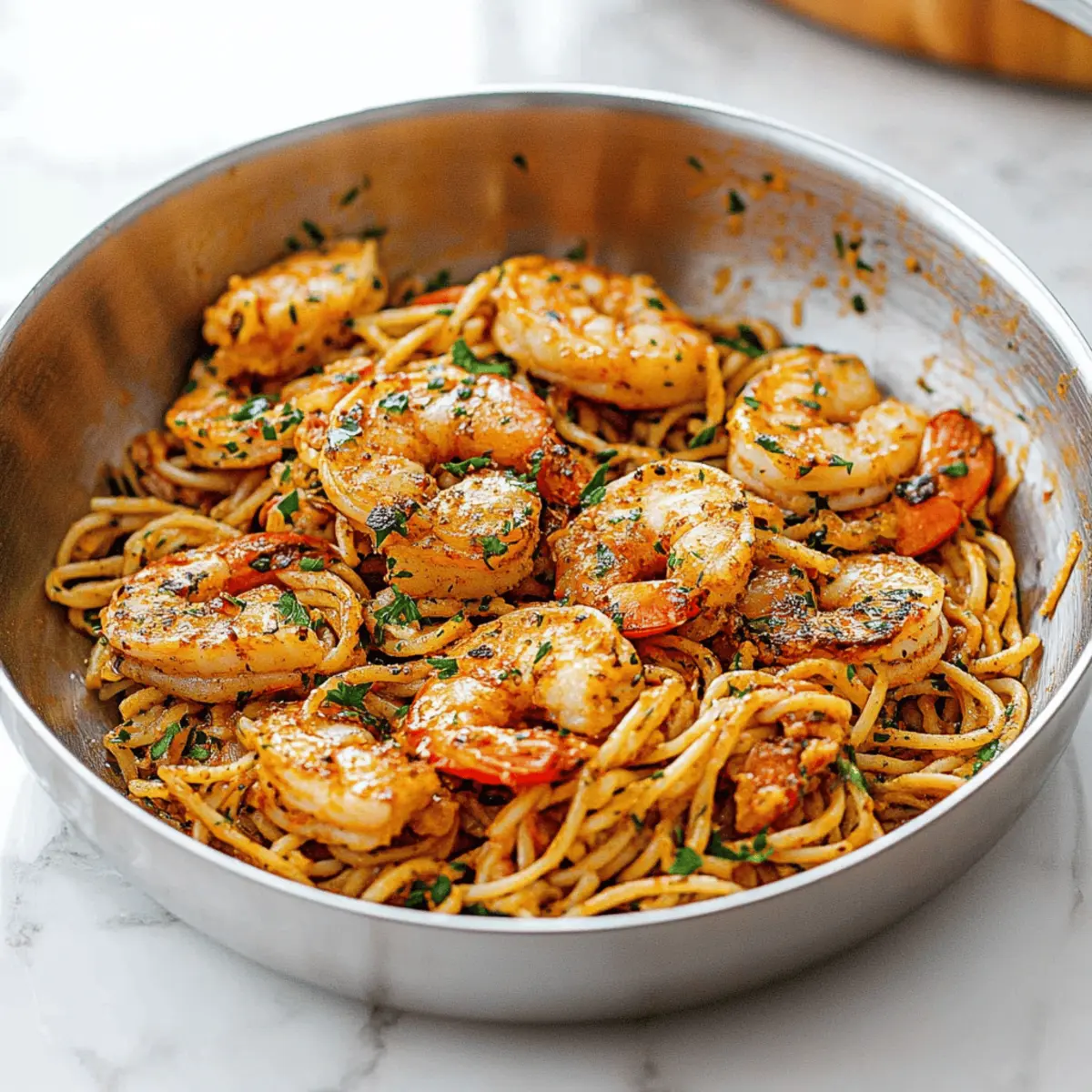
Savory Old Bay Garlic Shrimp Pasta Ready in 25 Minutes
Ingredients
Equipment
Method
- Boil the Pasta: Start by bringing a large pot of salted water to a rolling boil over high heat. Once boiling, add the dried spaghetti, cooking according to package instructions until al dente, about 8-10 minutes. Stir occasionally to prevent sticking. Before draining, remember to reserve at least ½ cup of the pasta water, then drain the pasta and set it aside in a large bowl.
- Season the Shrimp: In a medium bowl, combine the peeled and deveined shrimp with 2 teaspoons of Old Bay seasoning and 1½ tablespoons of fresh lemon juice. Gently toss to coat the shrimp evenly, allowing them to marinate for about 5 minutes.
- Sauté the Garlic and Shrimp: In a large skillet, heat 1 tablespoon of unsalted butter and 1 tablespoon of olive oil over medium heat until melted and shimmering. Add ½ tablespoon of minced garlic to the skillet, sautéing for about 30 seconds until fragrant. Quickly add the marinated shrimp and cook for about 2-3 minutes, or until they turn pink and opaque.
- Cook the Shallots and Garlic: Return the skillet to medium heat and add 2 tablespoons of unsalted butter. Once melted, toss in the minced shallots, sautéing for about 2-3 minutes until they become translucent. Next, add the remaining 1½ tablespoons of minced garlic and cook for another 30 seconds.
- Deglaze with White Wine: Pour in the ¼ cup of dry white wine, using a wooden spoon to scrape up any flavorful browned bits at the bottom of the skillet. Let it simmer for about 2-3 minutes, allowing the wine to reduce until only 1 tablespoon remains.
- Create the Creamy Sauce: Add ½ cup of heavy cream, ½ cup of freshly shredded parmesan cheese, and 1 tablespoon of Old Bay seasoning into the skillet. Stir constantly over low heat until the cheese melts and the sauce becomes creamy, about 2-3 minutes.
- Combine the Shrimp and Pasta: Return the cooked shrimp to the skillet, stirring in ¼ cup of chopped parsley for a burst of freshness. Gently toss everything together to ensure the shrimp are coated in the creamy sauce.
- Serve and Garnish: With the heat turned off, add the drained spaghetti to the skillet, tossing thoroughly to combine. Taste the Old Bay Garlic Shrimp Pasta and adjust seasoning with additional salt, black pepper, or Old Bay if desired. Serve the pasta hot, garnished with extra parmesan cheese and parsley.


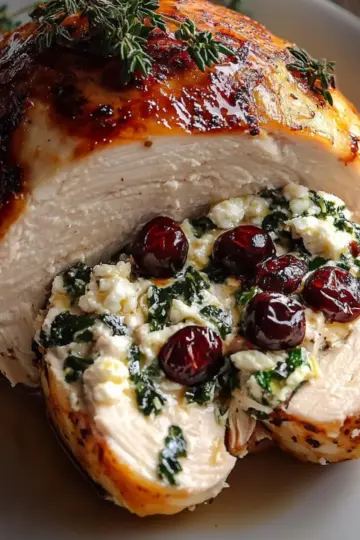
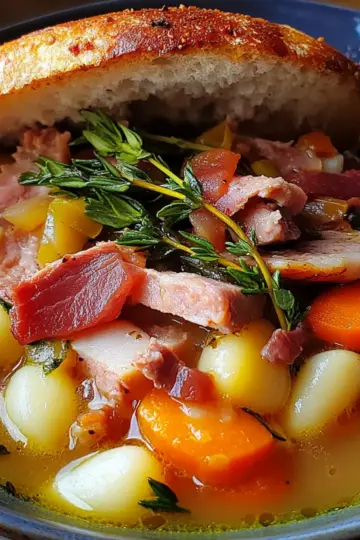
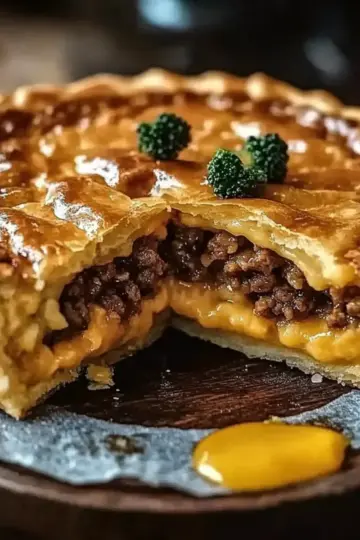
Leave a Reply